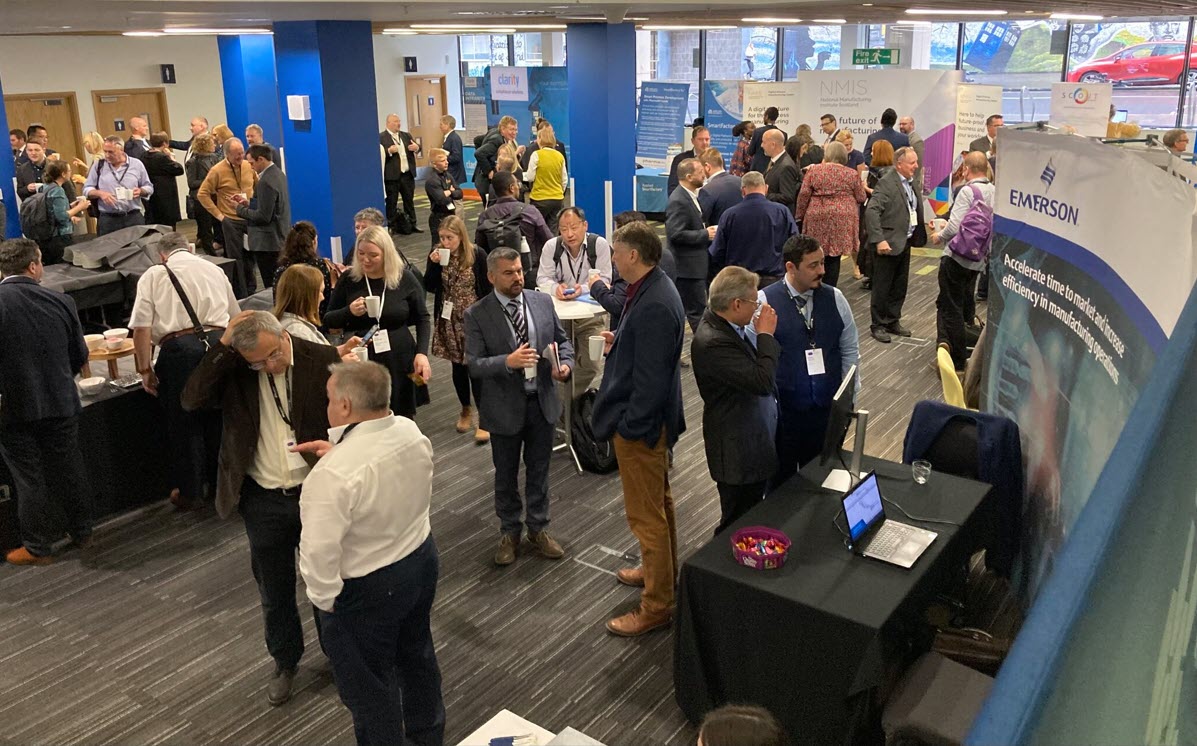
Talk of innovation and scientific advancement can often centre around the ‘Golden Triangle’ of London, Oxford, and Cambridge. But last week in Glasgow, exciting discussion and progressive action around the future of the pharmaceutical sector took place at PharmaTech Integrates 2022. “Across our events, we aim to bring leaders together to uncover strategic solutions to their industry challenges,” said Christopher Watt, LSI Executive Director, “and PharmaTech Integrates took this to a new level, with conference talks complemented by exclusive tours of the new Medicines Manufacturing Innovation Centre (MMIC) and CMAC facilities.” “Collaboration was at the centre of this event,” commented LSI Executive Director Samuel Thangiah, “and by joining forces with the MMIC and key stakeholders (CPI, University of Strathclyde, GSK, AstraZeneca, The Scottish Government, Scottish Enterprise & UK Research & Innovation), we had the privilege of taking our event to Glasgow and showcasing this hub of innovation.”
Catering for everyone with an aspiration to revolutionise medicines manufacturing technologies, PharmaTech Integrates 2022 featured facility tours, innovator exhibitions, product showcases, networking opportunities, and a full day of panel discussions and interviews covering advances in manufacturing & drug delivery technologies, the technological requirements for the therapeutics of tomorrow, and digital & data strategies for Pharma’s future.
Facility Tours: ‘a fantastic platform for Pharma innovation’
Progressive change starts with ideas but translating ideas into reality requires access to facilities – something Glasgow has in abundance. On day 1, 100+ delegates enjoyed a unique opportunity to explore the state-of-the-art facilities of the new MMIC. Set to open officially later this year, the centre will support the transformation of medicines manufacturing through innovative technologies and collaboration, helping to place the UK as an industry leader. The tour was complemented by opportunities for discussion with the MMIC and wider CPI teams – an enormous success, leading to 20+ follow ups which will hopefully translate into exciting future partnerships. The facility showcases continued on day 2: with the conference talks held in the Technology and Innovation Centre at University of Strathclyde, delegates were invited on a full tour of CMAC Future Manufacturing Research Hub’s world-class facilities.
“The facilities will provide a fantastic platform for Pharma innovation and collaborative approaches to solve key Pharma challenges,” said Arelette Halavage, FCIPD, who joined the tour.

Innovations & Exhibitions: ‘an opportunity for a showcase, to chat with visitors and explain how we can help’
Life Science Integrates aims to provide a platform to share innovative projects at any stage of the developmental pipeline – from ideas to established projects. This was demonstrated by the buzz and excitement around both the Innovator Area for early-stage SMEs and Exhibition Area featuring products from sponsors & partners. The Innovator Area included a broad range of exciting new concepts, ranging from peptides for sustainable crop protection to AI-driven Digital Health solutions, bespoke robotics, immunotoxicity detection and more, featuring Solasta Bio, NiTech Solutions, Cohesion Medical, Alcyomics, Labman & Cytomos. The Exhibition Area was filled with progressive technologies from Nanoform, CPI, CMAC, XpertRule, Clarity Compliance, Emerson, DPMC, DTG, Sterling Pharma, Applied Materials, S3 Process & Labman.
Thank you to Labman and The Scout Project, Nepic and Scottish Enterprise who sponsored and supported the Innovation and Enterprise Area.
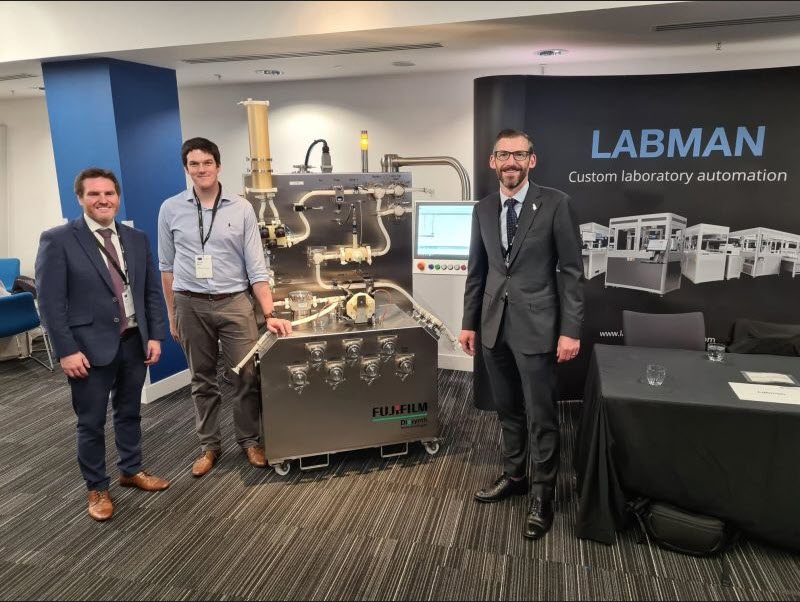
Opening Remarks & Expert Interviews: ‘our key mission to connect, collaborate, & drive momentum’
The conference got off to a strong start, with a well-received welcome from Dave Tudor, MD of MMIC. Commenting on the energy and networking across the two days, he also paid his respects to the Her Majesty Queen Elizabeth II who opened the venue of the event – the Centre for Technology and Innovation – in 2015. Dave outlined the challenges facing the pharmaceutical sector and the need for innovative adoption of technology.
“Technology’s got a wide role to play in the manufacturing of pharmaceutical products to make sure they’re accessible to everyone, they’re manufactured in a regulatory compliant way, and the carbon footprint isn’t a burden on the planet.”
Dave asked the sector to be “open-minded, collaborative, and fast” – values that delegates carried with them throughout the event.
Martin began with a message of energy, passion and innovation:
“it’s not just innovation for innovation’s sake but creating value from that innovation.”
He praised the UK’s ecosystem for directing funding into innovation but emphasised the need to invest in building skills. Looking to the future, he highlighted the need to incorporate flexibility into planning, prepare for future pandemics, and apply the speed of the COVID-19 vaccine program to other life-saving drugs. Martin ended with motivation for young people considering starting out in biotech: “what other industry gives you goose pimples when you talk to someone who’s taken the medicine you’ve worked on and they’re alive as a result?”
Next up, delegates were treated to a conversation between Maureen Wedderburn (NEC at MMIC) and Steven Bagshaw (NED at CPI) covering the challenges and opportunities for implementing technology in the Pharma industry. Maureen highlighted the importance of showcasing the art of possible, managing expectations, and demonstrating value:
“learn to fail quickly, learn from those failings, and show success in quick succession.”
Steve praised the success of the COVID-19 vaccine rollout:
“the reason why the UK was the first place to get approval was the way in which industry worked together innovatively with government, academia, funding bodies, and experts.”
Tackling the skills gap, he stated that the solution starts with getting children in primary schools excited so that they become the science experts of the future: “tell them the story of something that made you go ‘wow’.”
Making & Taking: “medication should be affordable, should be sustainable, and should be effective”
Centred around advances in manufacturing, formulation, and drug delivery technologies, the making and taking theme focused on the role of digital tools in increasing the efficiency of active ingredients manufacturing, distribution, and finished dose form technologies.
Speaking in the ‘Pro-Active Ingredients’ session, led by Mark Humphries (PA Consulting), Jonathan Haigh (FUJIFILM Diosynth Biotechnologies) explained the changes seen in the API space –
“rather than developing products to treat life impacting conditions, we’re moving to a place where we’re actually going to be curing them.”
This was echoed by Jon-Paul Sherlock (AstraZeneca) who outlined the drivers of change: precision healthcare, acceleration, and sustainability. Technology can support this adaptation, but effectively implementing it requires forward thinking to the end commercial product right from the beginning of discovery, as outlined by Robert Peeling (Britest).
These themes of forward thinking and adapting to change continued through the ‘Implications of Point of Care and Distributed Manufacture’ session led by Martin Warman (CPACT). Discussing how the manufacturing network can adapt to more stratified medicines and smaller manufacturing runs, Andy Dwyer (Summit Therapeutics) spoke about the increased agility needed in the supply chain. Ingo Krause (PrivMed) also advocated for agility, using the example of individualised doses. Dave Berry (MMIC) built on this message with examples of technology being built today to support this agility, and, describing the PACE platform at CME Ltd, Paul Knight spoke of the engineering challenges in producing agile manufacturing technology. But agility in manufacturing requires agility on the regulatory side, as explained by Ian Rees (MHRA).
“Regulation is legislation and guidelines. Disruptive changes don’t fit in current guidelines. Not only do you need to change the guidelines, but you need to change the law,” said Ian as he explained the horizon scanning program designed to make regulators ready for the future.
From manufacturing and distribution, the conversation changed to formulation in the ‘Free Form Thinking’ session. Facilitated by Massimo Bresciani (University of Strathclyde), the panel discussed the advancing technologies for the control of physical form and formulation.
“It’s about patient centricity and how we can make the form of the drug easy and efficient for the patient,” claimed Natalie Huther (Nanoform).
Coming from an academic perspective, Mingzhong Li (De Montfort University) explained the growing role of modelling in refining the number of experiments needed. John Mykytiuk (Sterling Pharma Solutions) returned to the theme of agility and flexibility, stating that “I don’t think there’s a single answer – everything is tailored to where you are and what you want to do.”
The Making and Taking track finished with discussion of advancing finished dose form technologies in the ‘Special Delivery’ session, led by Andy White (CPI). Chris Van Der Walle (Cell & Gene Therapy Catapult) highlighted the benefits of automation in ensuring correct integration of packaging, labelling, barcoding, patient identify, and everything involved in the delivery of a therapy. Picking up on the theme of integration, Deborah Norris (Cambridge Design Partnership) outlined the challenges: “we need to understand what the patient needs are, we need to understand what the formulation needs are, we need to understand what the client needs are, and we have to make it all work together”. Commenting on progress, Ajith Kumar Perakathu Somasekharan (Intelligent Assist) praised the transformation over the past 40 years and looked forward to a future where proteomics and epigenomics are integrated into a platform that helps to improve population health.
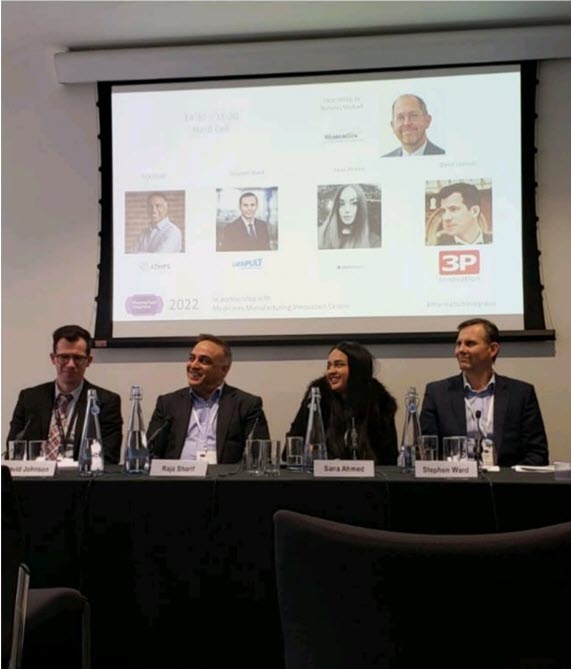
Fit for the Future – ‘we’re letting down the NHS, the patients, and the financiers by not using these efficient cost-effective technologies that are available’
Focusing on new therapies and the technology developments required for them to realise their full potential, this track covered oligonucleotide-based therapeutics, antibody drug conjugates, and cell and gene therapies.
Dave Laffan (AstraZeneca) led the ‘Gene Genie’ session covering the complex emerging field of oligonucleotide-based therapeutics. Panellists agreed that the challenge is trying to target tissues beyond the liver, with Peter Smith (AstraZeneca), commenting on the complexities of tissues such as the lungs and the need to improve endosomal escape. To move beyond the liver, Juliana Haggerty (CPI) said
“we need a broader range of programmes looking at a wider range of molecules, looking at in vivo performance alongside questions of stability and manufacturability.”
The discussion covered next steps for manufacturing, with Anna Perdrix Rosell (Sixfold Bioscience) mentioning the increase in SMEs developing in-house oligosynthesis capabilities to increase chemical diversity and pace, and Mark Cunningham (NATA, MRC, UKRI) describing a two-pronged approach to cater for the different manufacturing scales required for rare vs chronic diseases. Outlining current challenges, the panellists brought up issues around skills and sustainability. On skills, Jeske Smink (Silence Therapeutics plc) commented that
“getting really specialised people, especially in the oligonucleotide field, is extremely difficult.”
On sustainability, Peter Smith stated that “for small molecules, there’s ~100-500kg waste per kg of API. But for some oligonucleotides it’s over 10,000kg.” But we’re moving forward, as explained by Juliana Haggerty who outlined the CPI Grand Challenges targeted at increasing efficiency through advanced membrane technology & biocatalysts.
The growth in Antibody Drug Conjugate (ADC) development provides an exciting outlook for targeted therapies, and this was explored in the ‘ADC… it’s as easy as 1,2,3…4’ session led by David Molyneux (Sterling Pharma Solutions). Panellists discussed whether current supply chains are fit for the future, with key themes of capacity and partnership. Giving a big Pharma perspective, Steve Raw (AstraZeneca) stated that “one of the issues we’re going to face is capacity,” commenting on the increase in indications and trials. From a CDMO perspective, Stewart Mitchell (Sterling Pharma Solutions) agreed, describing CDMO expansion to meet capacity constraints of industry, and emphasising the importance of potency & scale. “How important is it for one of your suppliers to do everything?” asked Stewart, touching on the ‘all under one roof’ CMDO model. Coming from the point of view of a biotech, Dave Simpson (Iksuda Therapeutics) responded by emphasising the importance of strong partnerships: “lots of biotech’s have preferred partners. It gives comfort to return to a trusted partner.” Stewart expanded on the value of partnership, describing partnerships between CDMOs to optimise speed, capacity, expertise, and costs for clients.
The track finished by addressing cell and gene therapy production in the ‘Hard Cell’ session facilitated by Nicholas Medcalf (Biomatics).
“One of the key things is designing quality in when you’re in the design stage,” commented Sana Ahmed (QbDVision), mentioning the importance of Human Factor design.
David Johnson (3P Innovation) commented on the challenge of making therapies affordable by driving down the cost per unit dose, and described how automation can help address the skills gap in manual processes. Reflecting on this move towards automation, Stephen Ward (Cell and Gene Therapy Catapult) stated that we’re not quite at the stage where we have a fully automated process, but we’re getting closer:
“we need to have more connectivity in terms of digital for more autonomised manufacturing.”
Raja Sharif (ATMPS Ltd) took the conversation to the need for improved technology in the patient enrolment & screening side:
“typically this process took 6-8 hours, but our system brought it down to 1 hour because it’s all done through a single portal – from enrolling patients, screening, consent forms, to ordering the therapy.”
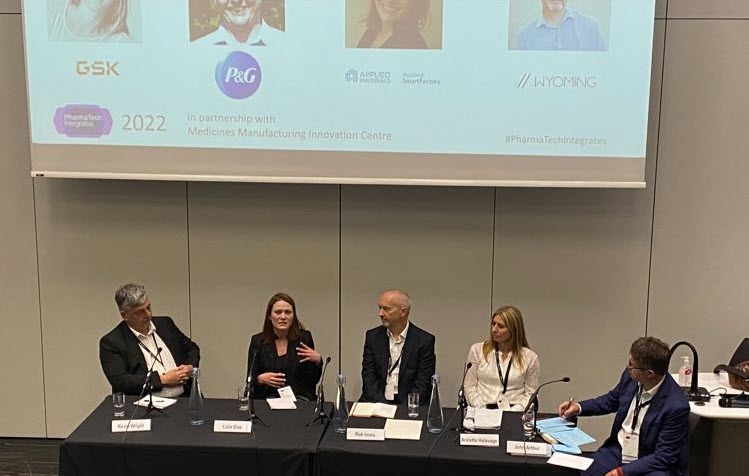
Digital Outcomes – ‘the technology transfer time can be reduced from 15-20 months to 6 months. For every validation process you would save about a million dollars’
With a focus on defining and implementing digital and data strategies for Pharma’s future, this track saw a mix of topics from AI to robotics – all highlighting the role of data.
“We need a holistic approach of end-to-end modelling,”
said Gertjan Braam (PA Consulting), explaining the need to connect modelling from R&D to final product manufacturing in the ‘Making Predictions’ session led by Sean Bermingham (Siemens). Iain Crosley (XpertRule) agreed with this integrated approach, emphasising the need to combine the chemistry and the process to get the best insight into drug development. Alan Johnston (Emerson) introduced the idea of digital readiness, stressing the importance of ensuring data is available and usable. Both Hui Yi Tee (Nanoform) & Harbir Sawhney (Atos) spoke of the increased pace and enhanced de-risking that predictive technology promises, with Hui Yi Tee giving an example of Nanoform’s predictive AI platform to aid design of formulations.
“The technology transfer time can be reduced from 15-20 months to 6 months. For every validation process you would save about a million dollars,” added Harbir Sawhney.
The 4th industrial revolution has seen the uptake of advanced robotics and automated systems to carry out tasks considered Dangerous, Dirty, Dull, Dear, Difficult, or Data-heavy.
Led by Mark Talford (Innovate UK), ‘The Rise of Robotics’ session explored the role of automation in Pharma.
“The problems we’re trying to solve here are not dissimilar from the problems in other sectors,” explained Dave Bader (Amazon Web Services), promoting cross-sector learning.
Robert Heckathorn described the journey towards automation at AstraZeneca. “We need a robust system that’s comprehensive,” he claimed, talking of the need for a complete metadata picture for experiments. Rob Crook (CatSci) introduced the CRO point of view, mentioning the need for value-based pricing rather than time-based pricing: “if I get the same outcome but do it twice as fast then that drives innovation”. An academic perspective came from Daniel Markl (University of Strathclyde) who explained his project funded by MMIC & UKRI, ending with the take-home message that “in the end, we want to use a minimal amount of material to get as quickly as possible to a formulation process that results in a product that meets the specifications.”
Getting results as quicky as possible was at the heart of the ‘Silicon Rally’ session, led by Yaroslav Logachev (Atos). Focused on speeding the adoption of real time data collection to enhance Pharma production processes, the panel all agreed that we can – and must – move faster.
“The hold-up isn’t due to a lack of technology, we’re far behind regarding work processes, strategy & people readiness,” said Jorge Costa (Emerson).
With a note of optimism, Mihai Matei-Rascu (Applied Materials) praised the improved integration over the past 5 years – “anything that comes onto the market has to be able to be integrated into other systems so it doesn’t exist in isolation.” Giving advice for start-ups, David Thompson (Clarity Compliance Solutions) explained the need to build compliance into the system right from the start: “it’s much easier to do it pro-actively than retrospectively.”
The track ended with a discussion centred around ‘Digital, Data and the Pharma Supply Chain’, facilitated by John Arthur (MMIC). Speakers focused on the culture, leadership, and skills needed to create an environment that encourages digital adoption. Coming from an HR background, Arelette Halavage (GSK) mentioned infrastructure, digital leadership, and accessible & meaningful data:
“co-creation & collaboration are important, but we must also make sure that beyond implementation there is a strategy to pioneer adoption.”
With expertise in data, Rob Innes (Wyoming Interactive) highlighted the importance of turning data into usable information, and the needs for common standards across the supply chain and improved skills training Lisia Dias (Applied Materials) gave use-case examples of digital strategy adoption, explaining the importance of finding the right people to deploy the right solutions. And returning to the theme of learning from other sectors, Kevin Wright (Procter & Gamble) explained how a common problem leads to a shared solution, picking up on values emphasised throughout the day:
“consider your team, people, skill set, deliverables, returnable investment model, data driven decisions – and think outside the box.”
Looking to the future
This first in-person PharmaTech Integrates saw 264 attendees with a further 44 requesting recordings on-demand.
“Once again, we just want to thank everyone who helped make this possible. We were delighted to have the support of 18 sponsors, with platinum sponsor Nanoform, 8 partners, invaluable key stakeholders, and, of course, event partner MMIC,”
said Christopher Watt.
“PharmaTech Integrates 2023 will be in Glasgow in September, with an MMIC tour planned again too,”
added Samuel Thangiah.
You can hear more from industry experts at upcoming LSI events Advanced Therapies Integrates (20 October) and the flagship event Pharma Integrates (17 November). All session recordings from PharmaTech Integrates are available for you to re-cap or catch up on any of the discussions on-demand.
